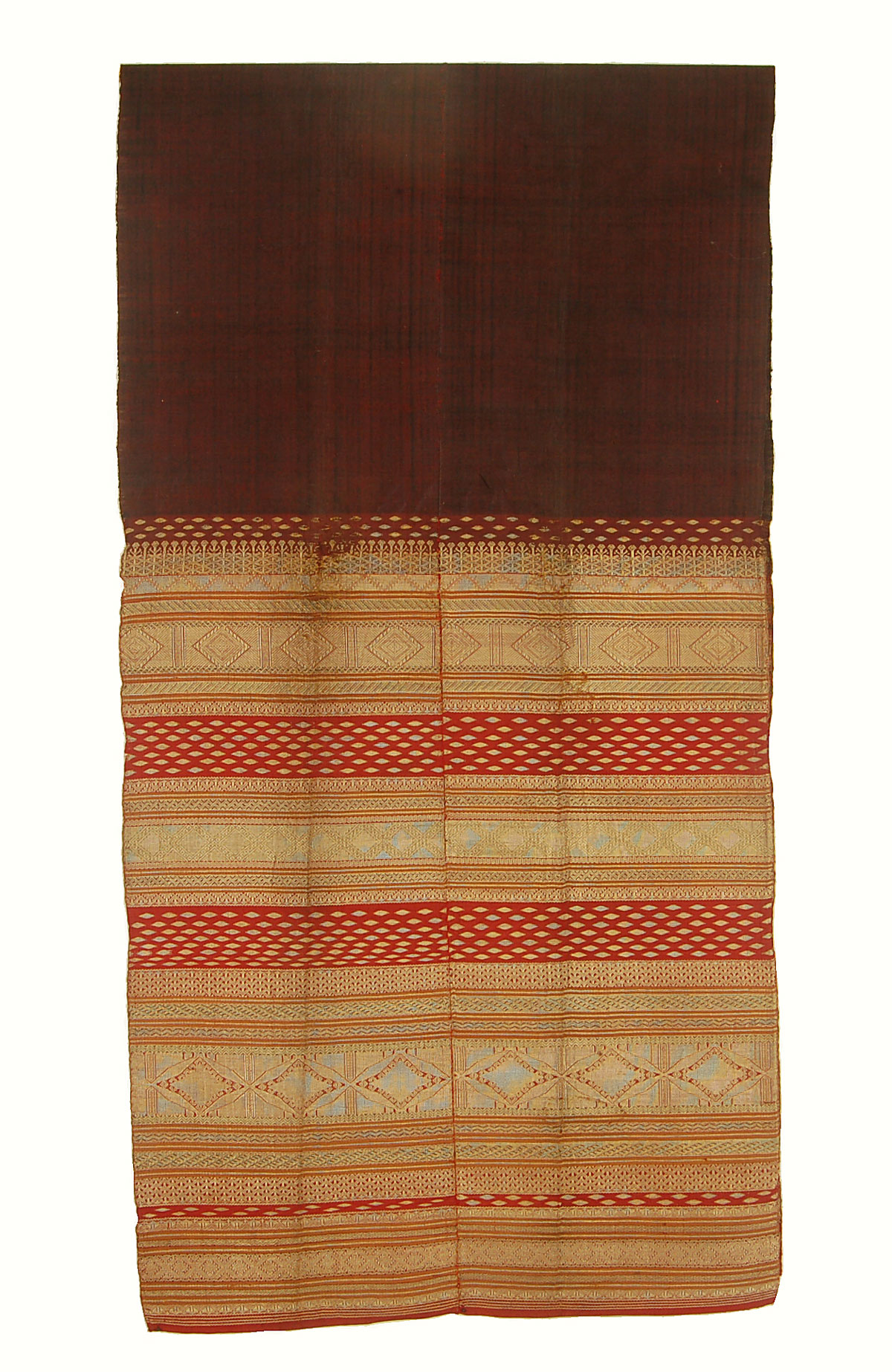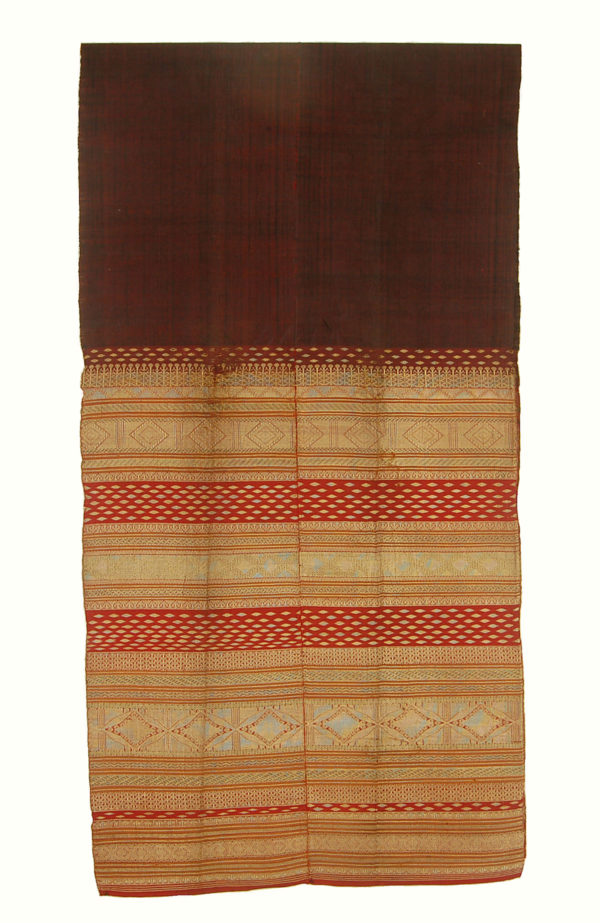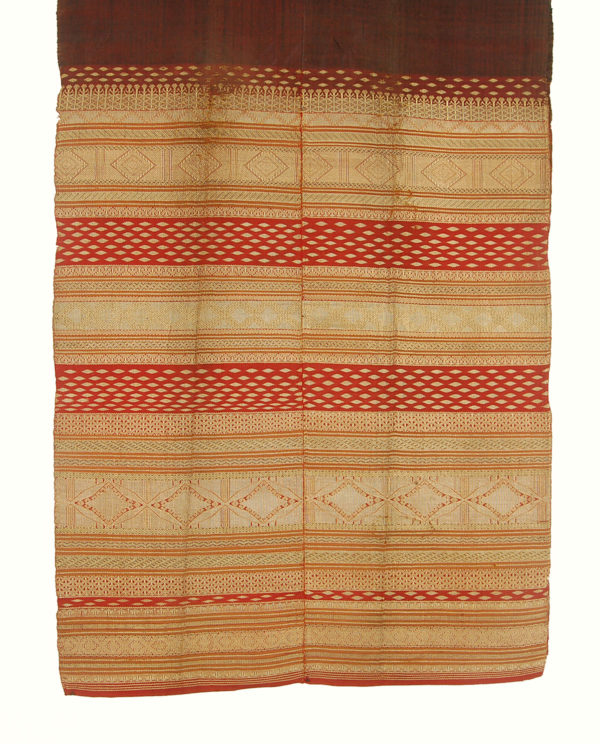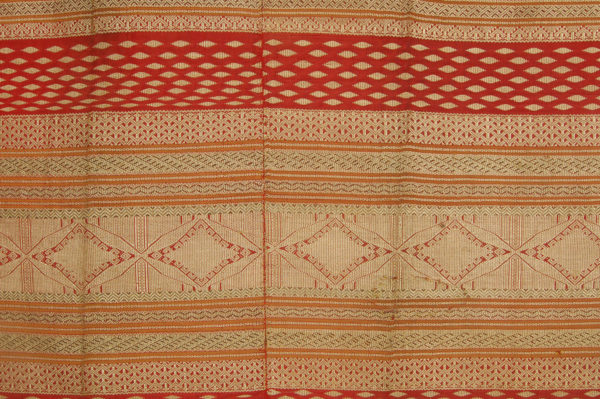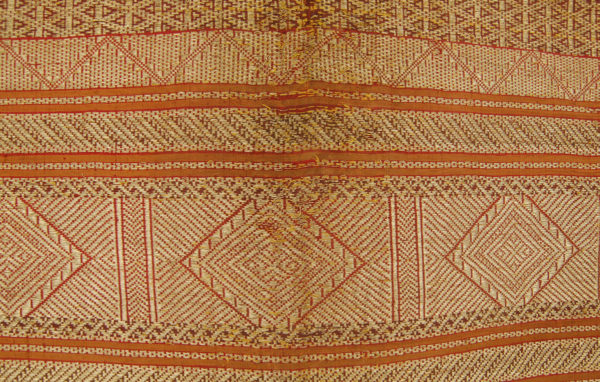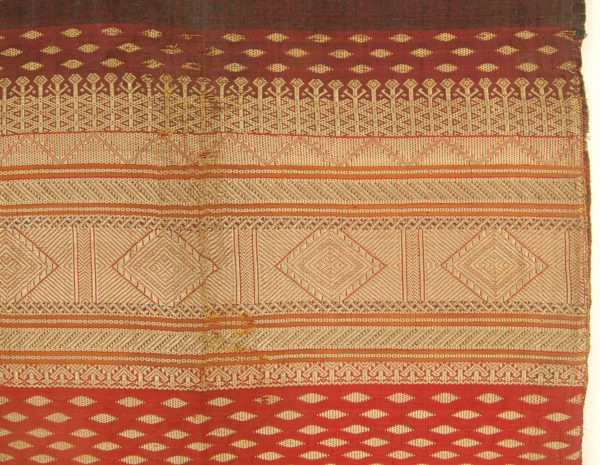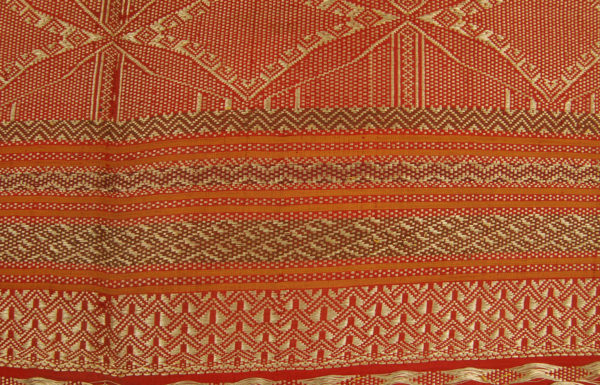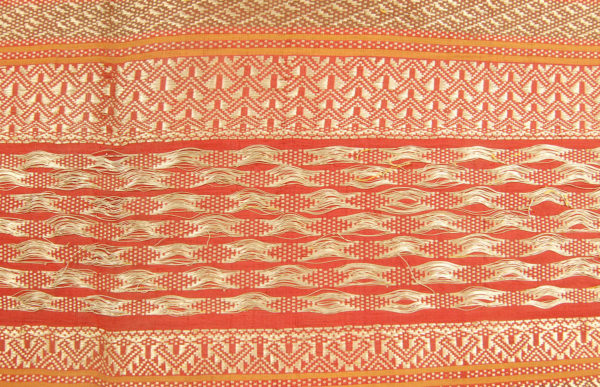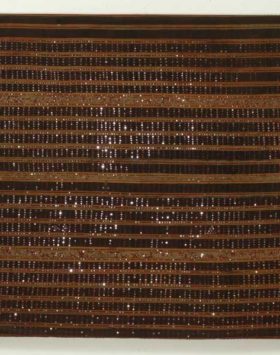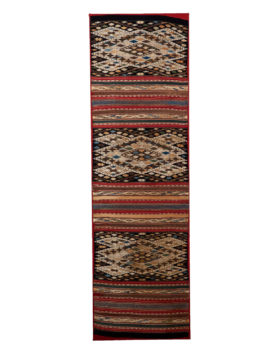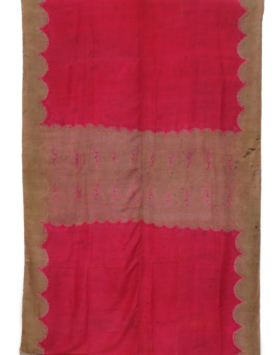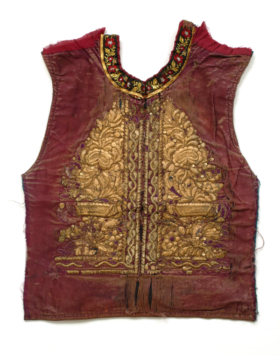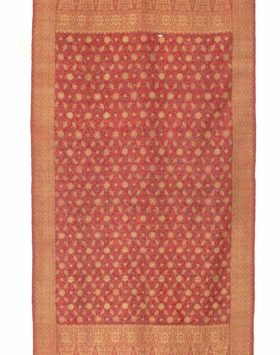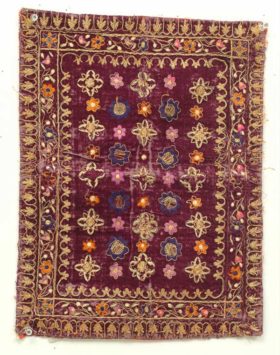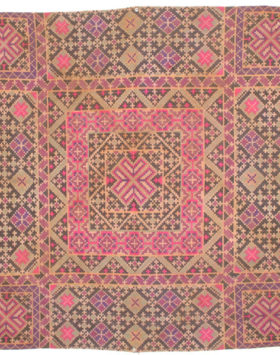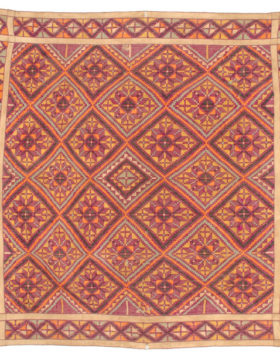Minangkabau Head Cloth
This ceremonial Minangkabau head cloth was made by weavers out of silk and gold-wrapped thread in the 19th century. The Minangkabau are a historically matrilineal Muslim society organized in small democratically-run villages in Western Sumatra, known for their richly symbolic and regionally-specific ceremonial clothing. Since each village is run by democratic consensus, each locality has its own specific rules about what and how ceremonial clothing should be worn. Minangkabau people can therefore usually identify where strangers are from based on the way they wear their skirts, hats, and shoulder cloths, or from the motifs woven into their clothing.
There are several types of head cloths, the deta, saluak, and the deta bakaruik. The deta is usually a plain black or red one meter square, where as the deta bakaruik is made from a long baclk cloth with pleats or gathers. This minangkabau head cloth is for the important saluak, which is folded from a rectangular piece of fabric that is usually highly embellished with gold-wrapped thread.
Almost every aspect of the hat has a symbolic connection to the wearer’s societal responsibilities once it has been completely folded together. The hat’s flat top represents the way the wearer must treat everyone equally, its lack of sharp corners reminds the wearer to have a calming presence, and the horizontal folds across the front recall the stairs to the adat house, which is where the wearer acquires the wisdom he needs to help lead his people. The right side of the finished hat is taller than the left to remind the wearer that while he is responsible for the welfare of his sister’s children, his duty is to his own children first.
The weaver who made this textile used some of the most iconic Minangkabau motifs including balah kacang (split peanut) and itiak pulang patang (ducks go home in the afternoon). Both motifs are linked back to adat (traditional wisdom). The ovals with concave-sided triangles represent peanuts and the way they naturally separate. This example of natural division is meant to admonish people to share things equally. The long lines with short lines coming off of them are stick-figure representations of ducks. This adat teaching is for people to adhere to adat the way that ducks stay in a line together when farmers take them home in the afternoon.
Circa: 19th century
Origin: Sumatra Indonesia
Material: Silk and gold-wrapped thread
Condition: Good. Minor damage from being folded as a hat.
Dimensions: 107" x 28"
Inventory number: TX4280
$4,400
SOLD
Call: (646) 370-6801
E-mail us: yosi@sarajo.com
